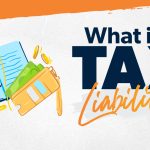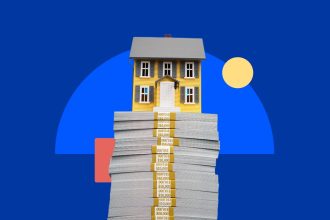Key takeaways
- An FHA loan is a type of mortgage geared toward borrowers with lower credit scores or who otherwise don’t qualify for a conventional loan.
- You can use an FHA loan to buy, build or renovate a home, or to refinance an existing mortgage.
- If you get an FHA loan with a down payment of less than 10 percent, you’ll pay annual mortgage insurance premiums along with your mortgage payments for the life of the loan.
An FHA loan helps borrowers with lower credit scores and down payment savings finance a home. This type of mortgage is widely available from different types of lenders, including banks and independent mortgage companies. Here’s a complete guide.
What is an FHA loan?
An FHA loan is a type of mortgage insured by the Federal Housing Administration (FHA), which is overseen by the U.S. Department of Housing and Urban Development (HUD). While the government insures these loans, they’re actually underwritten and funded by third-party mortgage lenders approved by the FHA. You’ll find many big banks and other types of lenders offer them.
FHA loans have a low minimum credit score and down payment requirement, which makes them especially popular with first-time homebuyers. You can get an FHA loan with a credit score as low as 580 if you have 3.5 percent of the home’s purchase price to put down, or as low as 500 with 10 percent down. These flexible underwriting standards are designed to help more borrowers become homeowners.
You can’t buy just any home with an FHA loan, however. Based on your credit and finances, the lender determines how much mortgage you’d qualify for, within the FHA loan limits for your area. You can’t use this type of loan to buy an investment property or vacation home, either.
Who are FHA loans best for?
FHA loans are generally best for homebuyers with lower credit scores, limited down payment savings or both.
How do FHA loans work?
FHA loans work like most other mortgages, with either a fixed or adjustable interest rate and a loan term for a set number of years. FHA loans come with two term options: 15 years or 30.
You’ll also pay closing costs for an FHA loan, such as appraisal and origination fees. The FHA allows home sellers, a home builder or a mortgage lender to cover up to 6 percent of these costs.
To insure these loans against default — that is, if you were to stop repaying your loan — the FHA requires borrowers to pay mortgage insurance premiums, or MIP. These go into the Mutual Mortgage Insurance Fund (MMIF) that covers loss claims. Although you’ll pay the premiums as the borrower, FHA mortgage insurance protects the lender.
FHA loan requirements
Here’s an overview of the requirements for an FHA loan:
- FHA credit score: As low as 580 with a 3.5 percent down payment or as low as 500 with a 10 percent down payment
- FHA down payment: At least 3.5 percent down if your credit score is at least 580, or at least 10 percent down if your credit score is between 500 and 579
- FHA debt-to-income (DTI) ratio: 43 percent (up to 50 percent in some cases)
- FHA occupancy rules: Primary residences between one and four units
- FHA mortgage insurance premiums (MIP): An upfront premium of 1.75 percent of the loan principal, typically paid at closing; plus annual premiums between 0.15 percent and 0.75 percent depending on down payment and loan amount and term, typically paid monthly
FHA minimum credit score
If you put just 3.5 percent down, the minimum credit score for an FHA loan is 580. You can qualify with a score as low as 500, but you’ll need to make at least a 10 percent down payment. Keep in mind that the FHA sets this limit, but individual lenders may require a higher score.
If your score is below 600, be prepared to find an FHA-approved lender who can put your application through manual underwriting, since getting approved can get more challenging the lower your credit score, says Bob Tait of Motto Mortgage Elite Services in Bucks County, Penn.
FHA down payment
You’ll also need to make a down payment of at least 3.5 percent. This minimum increases to 10 percent if your credit score is between 500 and 579.
If this seems like a stretch, you might not be completely out of luck. FHA loans allow borrowers to draw down payment funds from sources other than their own savings, such as a gift from a relative or close friend, says Tait. Borrowers may also be eligible for down payment assistance through a state agency to help cover the cost.
FHA debt-to-income ratio
To meet the DTI ratio requirements for an FHA loan, your combined monthly debt payments, including your mortgage, shouldn’t exceed 43 percent. No more than 31 percent of your income should go toward your mortgage payments.
That said, your lender could make exceptions for your overall DTI up to 45 percent, 50 percent or even 57 percent with an FHA loan, assuming you have mitigating factors like a lot of liquid assets or can make a sizable down payment.
FHA mortgage insurance
All FHA loans require you to pay mortgage insurance, which is split into two components:
- An upfront premium that’s 1.75 percent of the loan amount, which is paid either at closing or incorporated into the final loan amount
- Annual premiums that are paid as part of your monthly mortgage payments. The exact amount varies based on factors like the down payment, loan amount, loan term and loan-to-value (LTV) ratio.
For example, if you’re an FHA borrower who opts for a 30-year term and a 3.5 percent down payment, you’ll pay 0.55 percent of the loan amount, divided by 12 and added to your monthly payment. That means, if you borrow $300,000, you’ll pay $1,650 a year — or $137.50 monthly — for MIP.
FHA inspection and property requirements
FHA loans include a process in which a HUD-approved appraiser must assess the property to verify its market value and compliance with HUD’s basic property standards. These standards dictate that the property:
- Must be structurally sound with a solid foundation
- Must not have any significant defects or incomplete renovations
- Has adequate drainage and irrigation
- Provides a safe and livable environment with working heating, plumbing and electrical systems
- Has adequate lighting and ventilation in all rooms
- Is free of hazards inside and outside of the home
FHA loan limits
FHA loans have limits that dictate how much you can borrow depending on the type of property you’re financing and where you’re buying.
In 2024, the FHA loan limit for a single-family home in most counties is $498,257, but can be as high as $1,149,825 in higher-cost areas. For Alaska, Hawaii, Guam and the U.S. Virgin Islands, this limit is even higher, at $1,724,725, due to elevated construction costs.
Multi-unit properties have higher loan limits, ranging from $637,950 to $3,317,400, depending on the number of units and the location.
You can use HUD’s online search tool to find the limits in your area.
FHA loans vs. conventional loans
Conventional loans are the most popular type of mortgage. Unlike FHA loans, these types of mortgages are not insured by the government. Here’s a side-by-side comparison of the two:
Conventional loan |
FHA loan |
|
|---|---|---|
| Credit score minimum | 620 | 580 with a 3.5% down payment or as low as 500 with at least 10% down |
| Down payment minimum | 3% for fixed-rate loans; 5% for adjustable-rate loans | 3.5% with a credit score of at least 580 or 10% with a score between 500 and 579 |
| Loan term | 8- to 30-year terms | 15- or 30-year terms |
| Mortgage insurance | Private mortgage insurance (PMI) if putting less than 20% down; required until the loan balance reaches 80% of the home’s value | Upfront and annual mortgage insurance premiums (MIP) for all borrowers; required for the duration of the loan term if putting less than 10% down; only required for 11 years if putting 10% or more down |
| Loan limits | $766,550 for a one-unit property in most areas; higher in higher-cost markets | $498,257 for a one-unit property in most areas; higher in higher-cost markets |
| Rate structure | Fixed or adjustable | Fixed or adjustable |
Types of FHA loans
There are several types of FHA loans, including:
- Basic home mortgage loan or 203(b) loan: The 203(b) loan is the FHA’s main home loan program. These loans come with fixed and adjustable-rate options, as well as a choice between 15- and 30-year terms.
- Rehabilitation mortgage or 203(k) loan: An FHA 203(k) loan covers the home’s purchase price and repairs. This type of FHA construction loan comes in Standard and Limited options, which differ based on the cost and type of home improvements you’re looking to make.
- Disaster victims mortgage or 203(h) loan: If you’ve lost your home due to a major disaster and need to rebuild or buy a new home, an FHA 203(h) loan could help. There’s no down payment requirement, but you have to have been affected by a Presidentially designated disaster.
- Home equity conversion mortgage (HECM): A HECM is a reverse mortgage insured by the FHA that allows those over the age of 62 to tap the equity in their home as tax-free income.
- Energy efficient mortgage (EEM): This is a mortgage designed for the purchase of an energy-efficient home, or to upgrade a home to make it more energy-efficient.
- Graduated payment mortgage or 245(a) loan: This uncommon type of mortgage comes with payments that start small and increase over time. They’re most often used by those who expect to make more money in the future.
Pros and cons of FHA loans
Pros of FHA mortgages
- You can have a lower credit score: An FHA loan provides a mortgage option for borrowers with credit scores as low as 580 or 500, depending on the size of the down payment.
- You can make a low down payment: With a credit score of at least 580, you can make a down payment of as little as 3.5 percent.
- You can own a home sooner: Since FHA loans are easier to qualify for, you might be able to get into a home and start building equity sooner.
Cons of FHA mortgages
- You won’t be able to avoid mortgage insurance: Everyone pays upfront mortgage insurance premiums (MIP) with an FHA loan. For annual MIP, if you put down less than 10 percent, you’ll pay it for the life of the loan. If you put down at least 10 percent, you’ll pay annual MIP for 11 years, or until you refinance or sell.
- You’ll have to meet property requirements: FHA mortgages are not allowed to exceed certain amounts, which vary based on location. You have to live in the property, too: FHA loans aren’t designed for second homes or investment properties.
- You could pay more: When you compare mortgage rates between FHA and conventional loans, you might notice lower FHA loan interest rates but higher annual percentage rates, or APRs. The APR represents the total cost of borrowing, including fees and points.
FHA loan FAQ
-
An FHA loan can help you get into a home even with poor credit and limited savings for a down payment. For that reason alone, it’s worth considering. FHA loans can be costlier, though, thanks to the mortgage insurance premiums. If you have a stronger credit score — at least 620 — you could qualify for a conventional mortgage even if you can’t put 20 percent down. On a conventional loan, you won’t have to pay mortgage insurance for the entire loan term — you can cancel PMI when you accumulate 20 percent equity in your home.
-
When you’re ready to apply for an FHA loan, start by confirming your eligibility for the program. If you meet the credit score and DTI requirements, use our affordability calculator to estimate your budget based on your income, expenses and down payment savings. The next step is to explore lenders, narrow down your list of options and apply for a loan. You’ll generally need to provide the past two years’ of tax returns, two of your most recent pay stubs, your driver’s license or other official identification and full statements of your assets (checking account, savings account, 401(k) and any other places you hold money).
-
Compared to conventional loans, FHA loans offer a more generous credit score threshold but similarly come with a mortgage insurance requirement. Compared to VA loans and USDA loans, FHA loans are open to anyone who qualifies. VA loans are only for active-duty military, veterans and surviving spouses, while USDA loans are only for low- to moderate-income homebuyers in certain rural areas.
-
Everyone who gets an FHA loan pays mortgage insurance. If you put down 10 percent or more, you can get rid of FHA mortgage insurance after 11 years. If you put down less than 10 percent, you’ll pay mortgage insurance until you pay off the loan, sell the home or refinance to a conventional mortgage.
Read the full article here
















